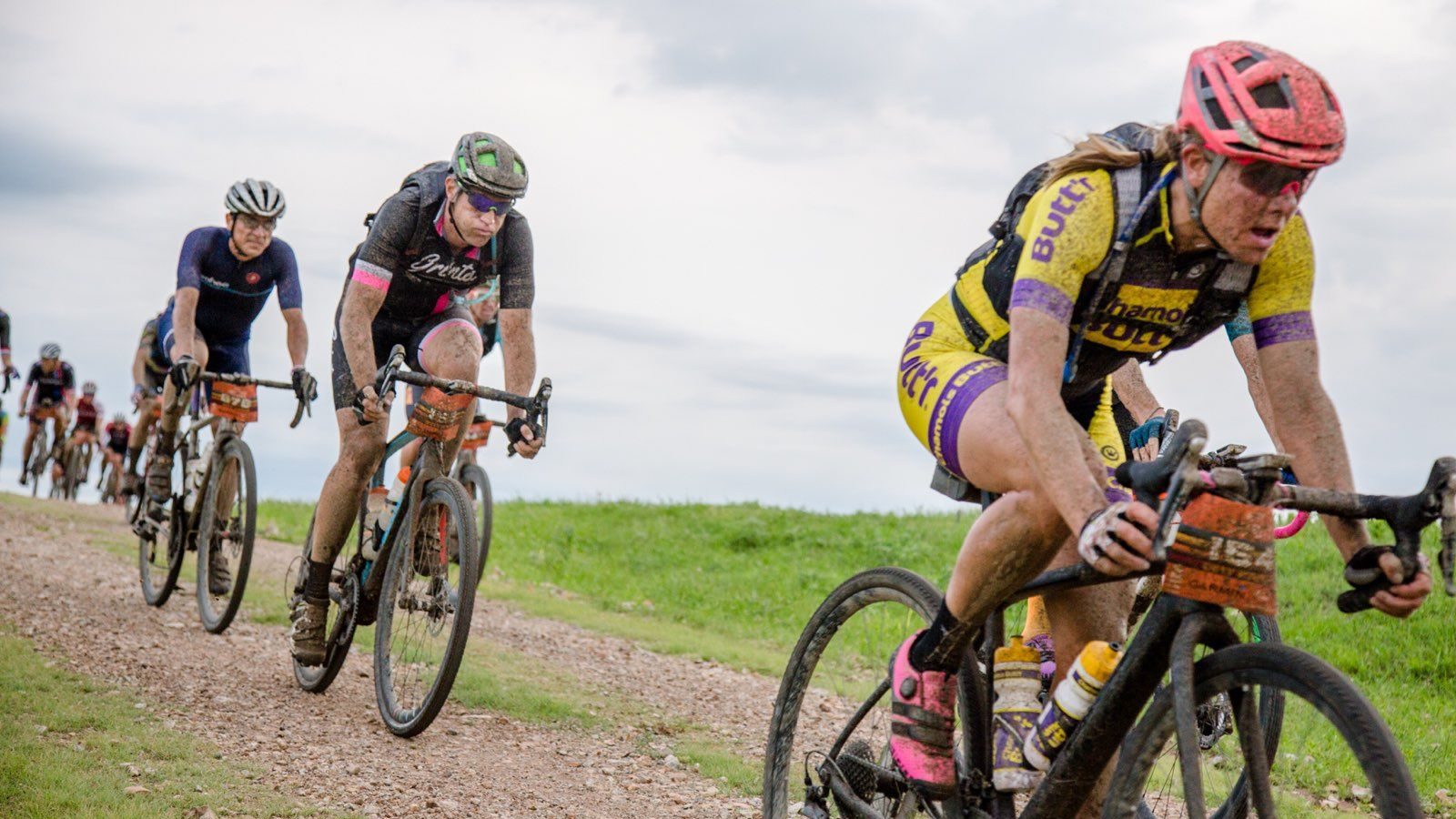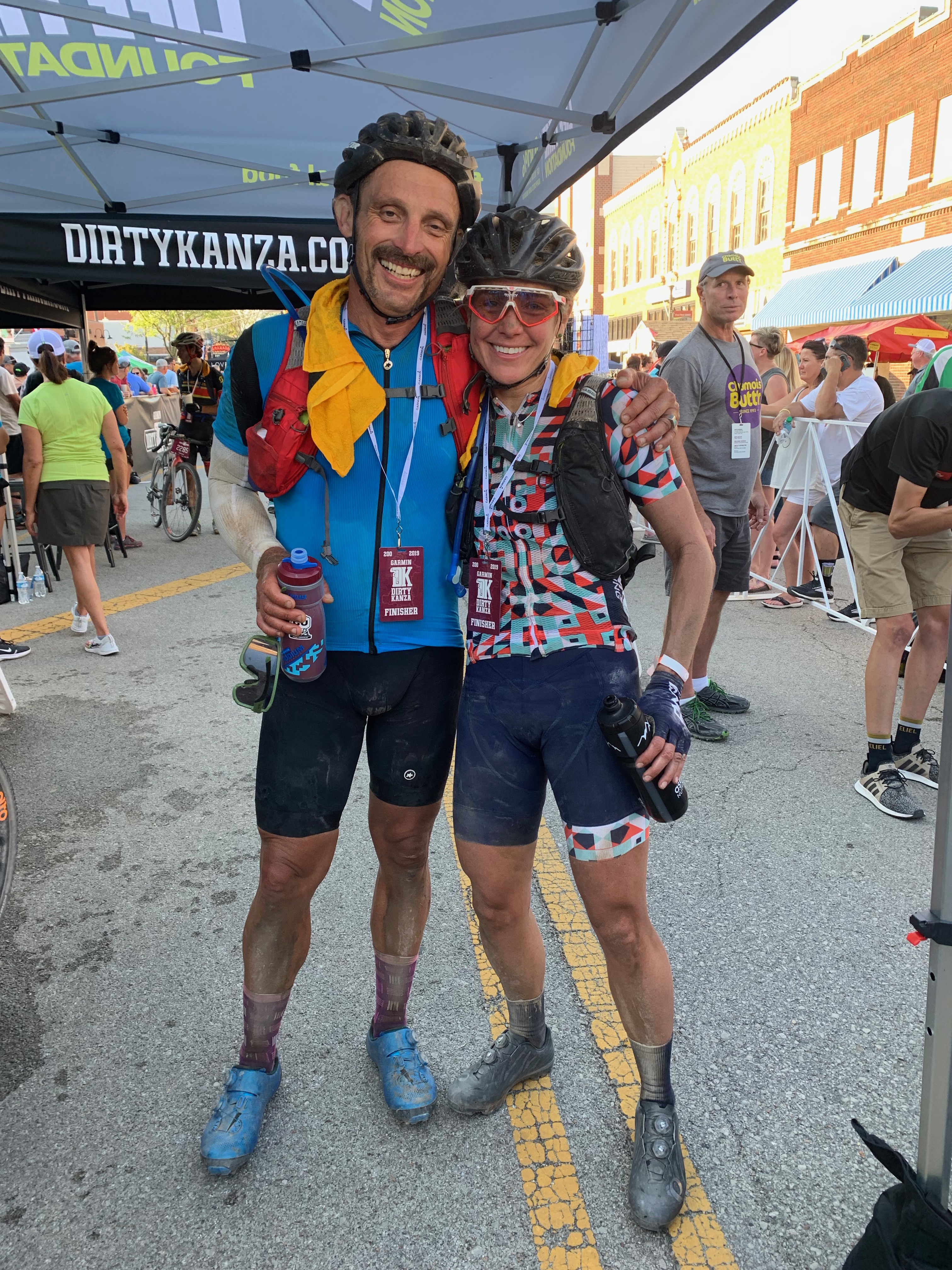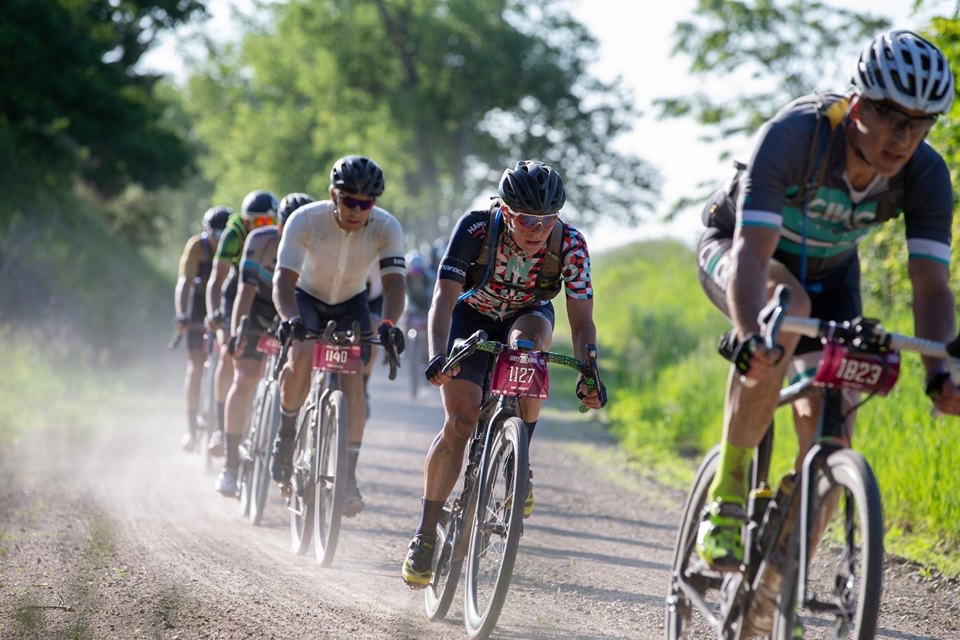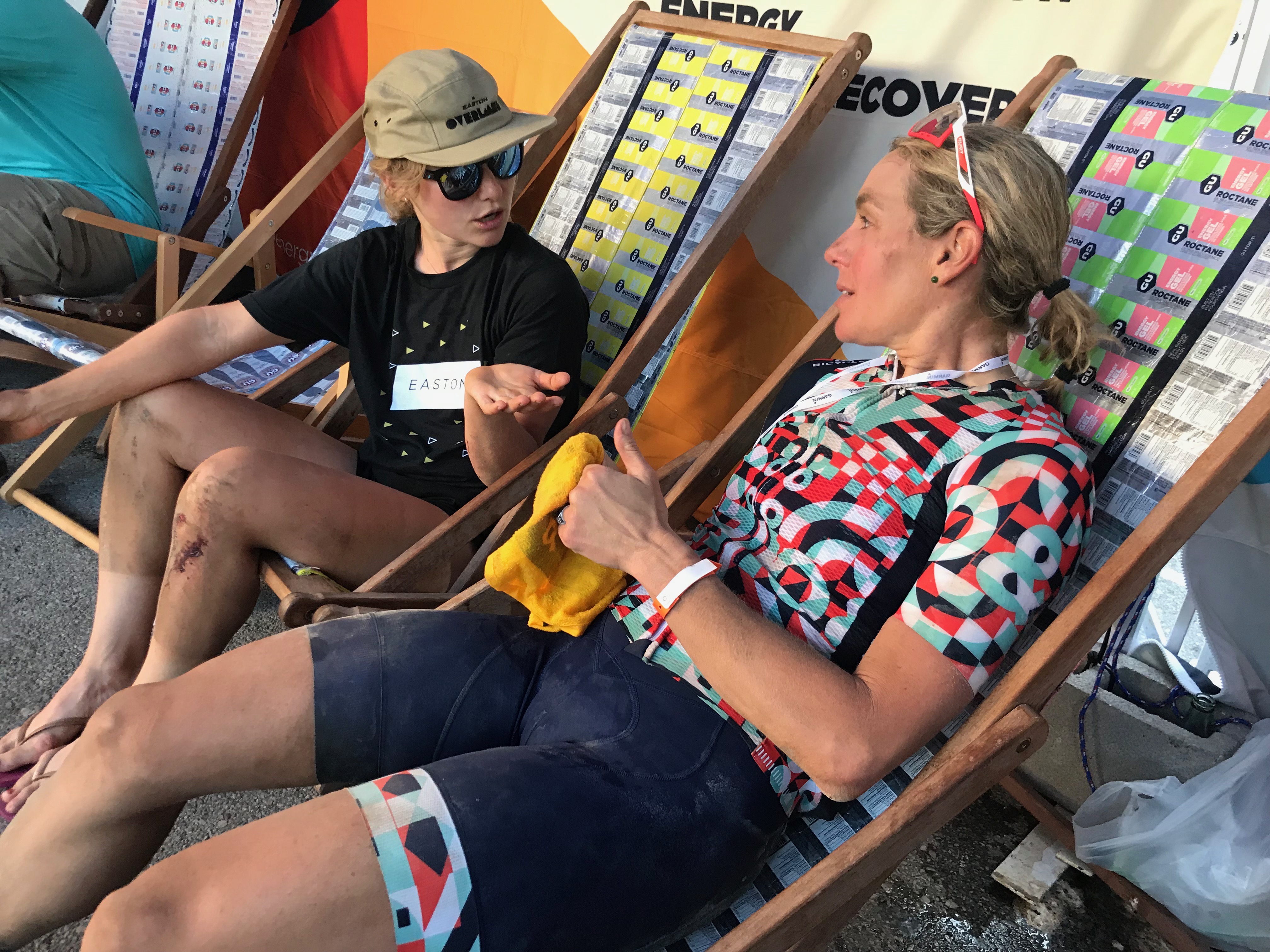10 things to know before racing Unbound Gravel
Amy Charity reveals her top tips for this epic race




Gravel racing is the fastest-growing segment of the sport in North America, and few events embody the spirit of the discipline's ability to make riders suffer, overcome, and discover their inner strength like Unbound Gravel. Cyclingnews spoke to gravel racer Amy Charity to unlock the secrets of the race before her third start in Emporia, Kansas.
Charity, 44, has a background in road racing, having spent time in Europe with the US national team and Optum, which is now Rally Cycling, but in recent years she's a full-time gravel convert and owns the SBT GRVL race in Steamboat Springs, Colorado. However, she is relishing a return to Kansas for Unbound Gravel because of the challenge, the camaraderie, and the satisfaction that finishing such a gruelling event provides.
In her other two participations, Charity gained some hard-earned wisdom with a seventh place in the women's field in 2019 and sixth in 2018 - both times spending around 13 hours in the saddle to finish. Here are her top-10 secrets to Unbound Gravel.
1. The start is intense
"I definitely trained for the race (the first year) but there were a few things that were really surprising. And one was how quickly it started. It felt like a criterium. I remember looking down, I was 30 miles into the race and I felt like I was near the end of a criterium - my face was red, I was breathing hard - my heart rate must have been in the 180s. And I looked down and it was still 170 miles to go. I was like, 'I better reel it in', but that was what it took to be in that lead group where some of the top women were.
"Just being surrounded by thousands of cyclists, you hear those sounds - you're going fast, there are people kind of peeling off, some water bottles are flying. There's just a lot to take in. You're in a tight pack and moving quickly and really exerting yourself. So I just remember that the intensity surprised me. And I was grateful to have kind of a background in road racing. So it was at least somewhat familiar.
"There was no way I was going to take my hands off the handlebars in those first 30 miles but I did wear a Camelback and I think that was a good call, to have a straw right in front of you that you can get to and remind yourself to drink."
2. Prepare for ups and downs
"I didn't stay in that lead group the entire time. You go through such deep moments of really worrying about if you can finish to feeling like you're okay, and that cycle would come and go repeatedly. And that was over a 13-hour period. I had to keep reminding myself 'you're just at a low point, you're going to come out of it', and I did. And then I'd be feeling pretty good and then go kind of back to that low point. So you just go through a lot emotionally when you spend that much time on the bike and just at that kind of level of exertion, it was not like a casual ride out, it was intense the entire time.
Get The Leadout Newsletter
The latest race content, interviews, features, reviews and expert buying guides, direct to your inbox!
"If you want to finish on the podium or top 10, then you have to evaluate how many matches you can burn, and if you are able to burn them early and recover enough to still keep it together enough to finish the race. That's the challenging equation. And that all depends on your level of fitness and training and how quickly you can bounce back.
"You really have to just stay within your own mindset, do your own race, keep moving forward and don't worry about what's happening with the other racers. If you can keep that mindset and not allow yourself to think, 'Oh, no, the winner is 30 minutes ahead of me, I'll never catch her' that will serve you. Keep thinking 'I'm doing okay, keep moving forward, anything can happen'. And that was sort of my mantra in 2018: Keep going, anything can happen."
3. It's just about all gravel
"I'd have to look at their exact number. But it's something like 99 per cent gravel. I remember one minute right before the start where you're on a paved road, and you just think, 'Oh, this feels so good'. And then you're back in the gravel. Those first 30 miles are in Flint Hills gravel, which is not very smooth. There are sections that are but it's not fast, it's not smooth, it's rocky, and it varies a lot. Some sections feel pretty deep, some are a little bit less deep. But it's all gravel, all dirt."
4. All food is good fuel
In 2018, they had stops about every 50 miles - so more regularly than they will this year. I just remember having a lot available and throwing a lot back like 'two PB&J's just went down and a bag of chips and a Coke' - just kind of getting anything down that I could calorie-wise. The kind of the tried and true method is approximately 250 calories an hour for somebody my size. And if you think you're going to take 13-ish hours to do the event, you're talking 3,000 to 4,000 calories in the day so you really need to eat a lot.
"Everyone is different on what they can eat. If it's something that long, especially when the pace isn't as intense as that first 30 miles, I'll eat anything - I'll eat pizza, peanut butter and jelly, burritos - you name it, and its calories at that point. What is most common is people getting really sick of something, like they can't take any more mix in their water bottle and so they don't drink or you just can't have one more gel. So if that's all you have available, then it's hard to keep getting calories down. Just having that variety - all of a sudden the things that you wouldn't normally eat, like, maybe Pringles or Pop-Tarts - those are all on the table as valid calories. My theory was to have a lot available and just grab whatever sounded good. And, and luckily, I was able to put down a lot of calories. You can't stay on top of the number of calories you're burning, so whatever you can consume, it's going to be helpful."
5. Eat and run
"Even the fastest will get off their bikes (for the rest stops). In a race that long, your chain is dry, you usually are a bit of a mess - your hands are gross and sunglasses are covered in whatever you've ridden through that day. Even the fastest are stopping for a couple of minutes to just kind of regroup, get their bike in working order, kind of clean off, grab what they need, put some food down and then hit the road. The less time you spend at those stops helps. Every minute you spend sitting or standing there, it's just harder to get on the bike, it's harder to get your legs going again. So just a really quick stop, get things taken care of and then head out."
6. Bring a support crew
"You're on your own a long time and there's no outside support, which is a really key piece of all of it. You can only get your support when you're at a rest stop. You can't call somebody to meet you at another point - that is not allowed. So you just have those two points that you can get help, other than from other racers. So if you can talk a racer to helping you out then that's fair game.
"It's really far before you see your support crew. So I'll have a litre and a half of water on my back and I'll have two large water bottles. And that will hopefully be enough, depending on how hot it is.
"You're allowed to take support from anyone who's out there offering support to everyone, anyone who's neutral. One year I remember I could barely pedal, I was so thirsty, and there was a woman in a pickup truck. And she was just sitting there. And she said, 'Do you want some water?' And I was like, 'you might have saved my life'. She was just out there offering it to all the racers. So you're allowed to take support from people who are not part of the race and not part of your support crew. And luckily, those people are out there, and can definitely save your experience.
"We had some friends that had just moved to Kansas, and they offered to help us out. So we just gave them the food that we wanted, and they were there and cheered us on. There's really a wide variety of what people have - some pro racers have Formula 1-like setups, and others have friends and family that are kind of cheering sections. It was so nice to have a smiling face, and then a variety of food available and somebody who's there just to greet you and wipe down your sunglasses and your face, cheer you on and encourage you to keep going."
7. Everything will hurt
"You almost can't even keep track of everything that hurts. Hotfoot is really common - it's things that maybe didn't come up in your training because you might have only done six hours or eight hours and all sudden you're on hour nine and you're like, 'my feet are in agony' or there's a saddle sore or your neck or shoulders hurt. You can have pressure points from your sunglasses - there are so many things that can begin to bother you that you just can't even like keep track of it. You're not even thinking of your quads. They're like so far down the list of what's hurting you."
8. Be prepared
"One thing I brought the first year that I was really grateful for was an extra pair of shoes. When I got to mile 100 at that stop, my feet were in agony. And I changed shoes, and my life changed that moment. Somebody had given me that tip, and I did it and it was so incredibly helpful.
"In 2019, I had really bad luck with flat tires, I split a sidewall, I ended up getting seven flats. I was repairing a tube every 20 miles. This year, I'm going burlier with tires, I'm using CushCore, I'm taking Dynaplugs, so if I do get flats I'll be able to fix them quickly.
"I'll have a saddle bag on the back and I'll have a bag on my top tube, and then I'll wear a Camelback. On my top tube is the food I want to eat immediately. Anything in my Camelback is stuff that I hopefully don't need to access right away, the same with the saddlebags - that's repair stuff.
"Bike maintenance is definitely not at the top of my skill set. And so if I do bust my derailleur, it might be the end of the day for me. But that is not the advice I would give others. The advice I would give others is to carry a chain tool and know how to use it.
"I think most people in an event like Unbound will be on gravel bikes. Everyone out there will likely have disc brakes. And that's pretty important. Tire choice is really important. I'm planning on using Panaracer Gravel Kings in a 38, they make a plus model with a reinforced sidewall, and that's what I'll be using. People select anywhere from a 35mm to something like a 42, maybe even a 45 but something really burly. You're always making a trade-off of going quickly and then not running into flat tires.
"On pressure, I'll go pretty low, probably 32 (psi)."
9. Easy on the stream crossings
"I was riding with somebody in 2019 and he went through one that didn't seem like it would be a big deal - it was maybe like 140, and he took it pretty fast and it completely taco'd his wheel, it just snapped and he was done for the day. I will definitely slow down for them a lot because it's not worth the risk of having a mechanical or getting a flat. Some are just no problem and then others are a problem. Unless you have someone in front of that you're following you don't know until you're in it."
10. Magic will happen
"There's something about Unbound. In mid-June, I'm still going to be on a high from Unbound. It just takes you to such a deep dark level and then you somehow make it through - it's amazing what it can do to shift your perspective.
"I'm motivated again for rides afterwards, knowing that every ride I do will be shorter, and probably hurt a lot less.
"You go through these interesting experiences with people like, in 2019, I bumped into Yuri Hauswald (2015 Dirty Kanza winner) at one point in the race, and he was on his knees. And he was just like, 'I can't keep going'. And somehow I got him to ride with me. And then I got to the point that he had been where I could barely pedal and he's like, 'you got this'. We just encouraged each other the whole way and finished the race. Every time I see him, I think of how he got me to that finish line just riding with him.
"You have those experiences throughout the day - you meet these people that have seen you in the darkest place, but you can have such an impact on them.
"In 2019, at around mile 60 and the race the was going really well and I had some dreams of doing very well. Then I tore the sidewall and every 20 miles, I was getting a flat again. I just couldn't get out of that kind of a recurring theme of - I'm good. I'm moving along, I'm picking off riders, knocking off time and I'm getting up into a really good position and then get a flat again.
"Then I ran into someone I knew was carrying a tire for his girlfriend, and I knew she was out of the race. And this was maybe mile like 150 and he was riding by me and I waved him down and he gave me a new tire, which was amazing. It's just so funny the number of things that happen to you out there. I just know he had it and he was happy to get rid of it."
"Anything can happen up until the finish line. There was a year that Amanda (Nauman) and (Alison) Tetrick sprinted for the finish. You might feel great at mile 180 but then things turn for your last 20 miles. It really is about keeping it in perspective that okay, I'm having a mechanical now or I don't feel well now, but I'm going to later and it's going to turn around."
Bonus tip: Bring your cell phone, there's no broom wagon
"You have to have a way to call your support if you're done. The guy who taco'd his wheel didn't have a phone. So I gave him my phone and he called his wife and then his race was over. So you need to kind of either carry a phone and hope there is cell service or a friend on the course you will let you use theirs."
Amy Charity's 2021 Unbound Gravel gear list
- Wahoo ROAM bike computer (Unbound 200 course loaded)
- Camelbak Chase Vest - 1.5 liters water, 1 x CO2 and adapter, gels, chapstick, Dynaplug
- 2 large bottles on the bike (1 GU Roctane, 1 water)
- Top Tube Box - GU Roctane Gels, chews, waffles, SANS Meal Bar
- Frame mounted mini pump
- Saddle bag - 2 x 16 oz CO2, 1 700c spare tube, multi tool, tire levers
- Pearl Izumi race jersey - 3 pockets loaded with more food (PB&J, waffles, chews)

Laura Weislo has been with Cyclingnews since 2006 after making a switch from a career in science. As Managing Editor, she coordinates coverage for North American events and global news. As former elite-level road racer who dabbled in cyclo-cross and track, Laura has a passion for all three disciplines. When not working she likes to go camping and explore lesser traveled roads, paths and gravel tracks. Laura specialises in covering doping, anti-doping, UCI governance and performing data analysis.